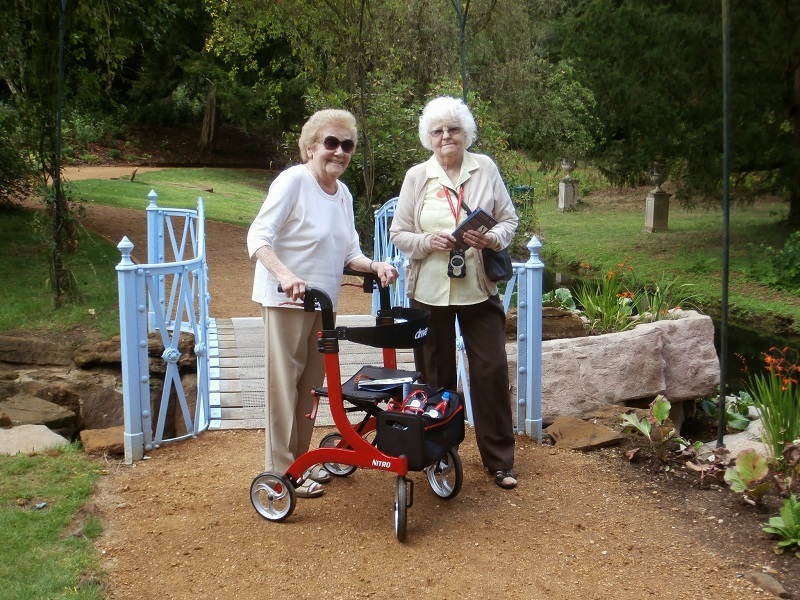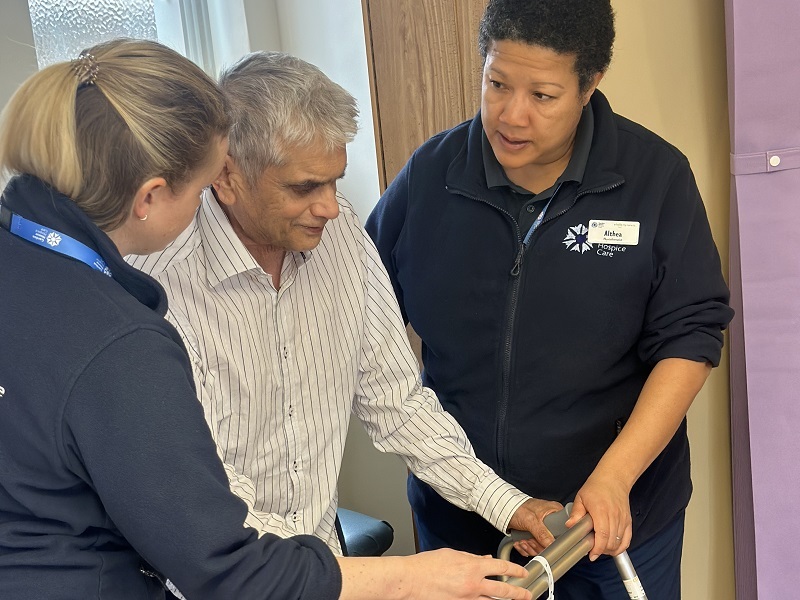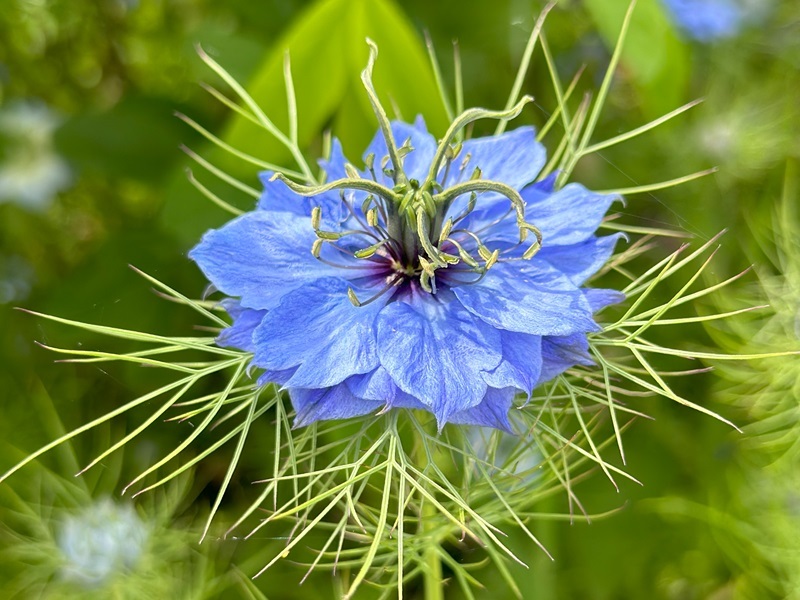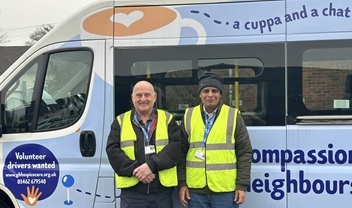Dorothy and best friend Lilian moved to Stevenage together in 1956, where they volunteered in all sorts of organisations and groups and later became New Town pioneers. They were 'up to mischief' together until their late 70s, when their health began to decline. Dorothy's daughter, Jan, believes both of them would have benefitted from our frailty service.
Jan recalls: "They met volunteering for Arthritis Care and for many years supported the regular meetings in Stevenage and helping on day trips and annual holidays. When they both stopped working, they did shifts at the café in Lister Hospital and sold items they'd made such as chutneys, cakes and knitted blankets to raise funds for the Hospice, the hospital and Arthritis Care.
"They were both very stoic about growing old. I often phoned mum only to find the two of them were out on a day trip somewhere!"

Dorothy and Lilian pictured together while out on a walk
Struggling with increasing frailty
"Sadly, the last five years of mum's life were limited by COPD which meant she had to use oxygen. She also had severe rheumatoid arthritis which limited her mobility and osteoporosis. Lilian suffered with acute asthma all her life, which made her more vulnerable to chest infections as she became older. She also had kidney failure and her eyesight started to deteriorate.
"They both missed being able to get out and about and the social aspect of their volunteering. Although Lilian continued to knit and crochet right up until her death, it became a solitary activity for her.
"Mum had a couple of falls and experienced several long spells in hospital with chest infections. Each time, she was discharged home with a sheet of exercises, which she struggled to understand and was scared to try if there wasn't someone around.
"One time, she was suddenly discharged and unbeknown to the family sent home by taxi. The house was cold, there was no food and her oxygen supply had been disconnected. When I found her, she was extremely scared, cold and tearful and it was obvious she couldn't live on her own anymore. Fortunately, we were able to secure a place for her at a local care home for the final 18 months of her life."
Discovering the Hospice
"It was through the care home that Mum was first introduced to Garden House Hospice Care to help with her pain, although she resisted going to the Hospice for several weeks as she was frightened and assumed a hospice was just for people who were dying.
"However, the staff were wonderful. They helped Mum with pain management and gave her some much-needed TLC. She was able to enjoy relaxing hand and feet wax baths. But perhaps more importantly, she was able to have a coffee and chat."

Jan's mother, Dorothy
How might the Frailty Service have helped?
"It would have been so much help to have physios, occupational therapists and nursing support visiting mum and Lilian in their own homes. It would have given them confidence and helped ensure they were using the aids provided correctly.
"You can't underestimate the importance of feeling useful, especially if you have spent your whole life volunteering. Not being able to do the things you have enjoyed and helped to define you as a person - like raising money or helping make tea and cakes - is very isolating and depressing.
"So many older people are worried about 'being a nuisance' and don't like to ask for help, so will muddle on regardless. So being able to get some help with their symptoms would have been such a great help and reduced their loneliness.
"I think the service is a fantastic addition to the amazing support the Hospice already provides for the local community and I am delighted to be able to support such a fantastic initiative."






